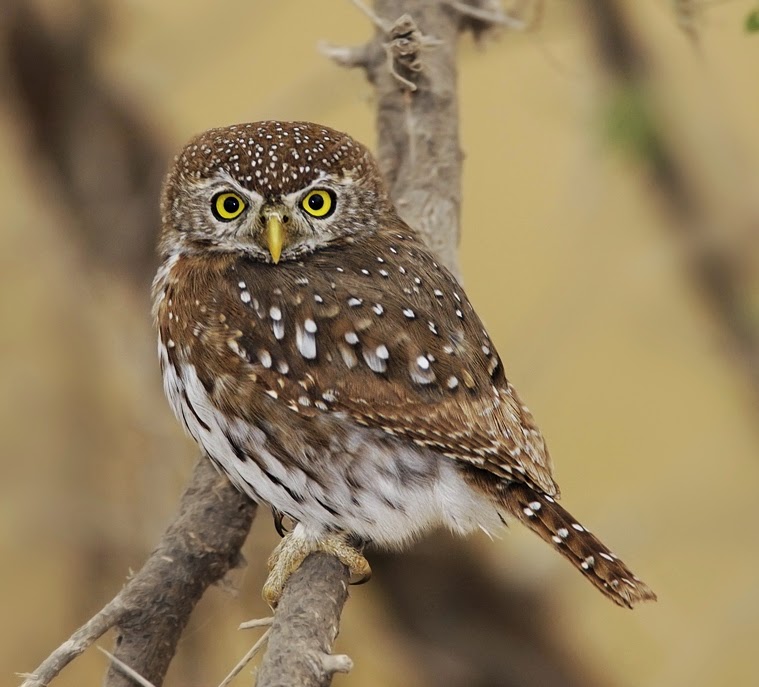 |
| (Photo from Flickr) |
Common name:
African barred owlet (en); mocho-barrado (pt); chevêchette du Cap (fr); mochuelo de El Cabo (es); Kap-sperlingskauz (de)
Taxonomy:
Order Strigiformes
Family Strigidae
Range:
This species is found from southern Somalia and eastern Kenya, through Tanzania and southern D.R. Congo, and into Angola and northern Namibia, Botswana, Mozambique and north-eastern South Africa.
Size:
These birds are 20-22 cm long and have a wingspan of 40-45 cm. They weigh 80-140 g, with females tending to be larger than males.
Habitat:
The African barred owlet is found in open, moist tropical forests, riverine woodland and moist scrublands, also using forest edges and second growths. They are present from sea level up to an altitude of 1.200 m.
Diet:
They mainly hunt large invertebrates, such as beetles, grasshoppers, caterpillars, mantids, hawk moths, scorpions and millipedes, also taking birds up to the size of a hoopoe, mice, small lizards and frogs.
Breeding:
African barred owlets breed in August-November. They nest in natural tree holes or old woodpecker or barbet nests, 3-6 m above the ground, which they line with leaves and feathers. The female lays 2-3 white eggs, which she incubates alone for 28-34 days. The chicks are fed by both parents, leaving the nest 30-33 days after hatching, but only starting to fly about 10 days later. They reach sexual maturity at 1 year of age.
Conservation:
IUCN status – LC (Least Concern)
This species has a very large breeding range and is suspected to be in decline owing to ongoing habitat destruction.







